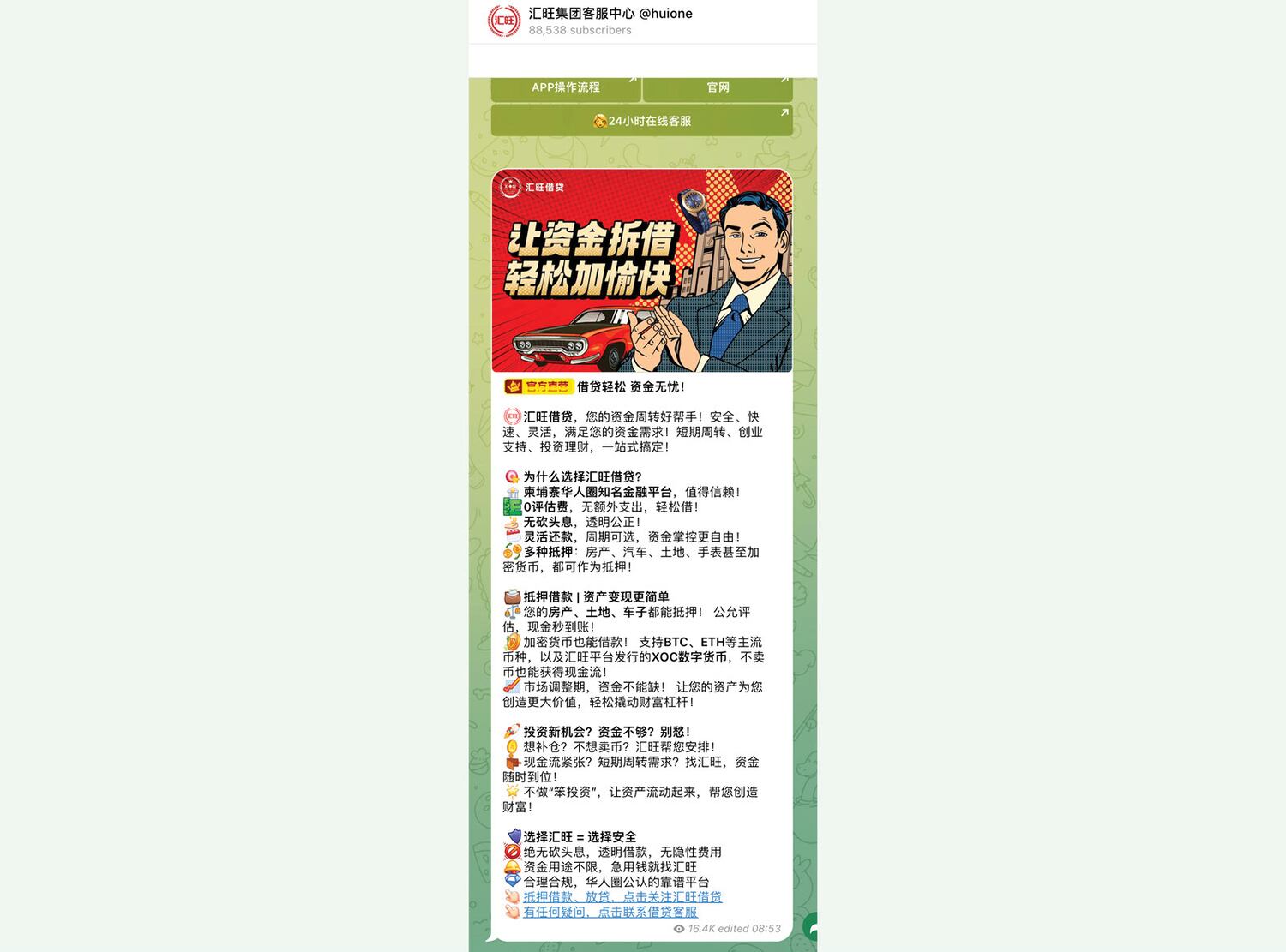
The vision
“The uncertainty of the situation is taking an emotional toll on our entire community. The job market is shifting so rapidly that it’s an uneasy time whether you’re employed at the moment or not.”
— Trish Kenlon, founder of Sustainable Career Pathways
The spotlight
On Thursday, February 27, Tom Di Liberto lost his job as a public affairs specialist in the office of communications at the National Oceanic and Atmospheric Administration, or NOAA. He was just two weeks away from the end of his two-year probationary period as a federal employee — despite having worked as a contractor at the agency for over a decade — when he and hundreds of his NOAA colleagues were fired as part of a downsizing led by the so-called Department of Government Efficiency. Like many of the thousands of federal workers who have found themselves unemployed or unsure of their employment status since the start of Donald Trump’s second administration, the climate scientist turned communications expert took to LinkedIn to share his feelings about being fired that day, and start the process of figuring out what happens next.
“Being a federal employee at NOAA was a dream come true. Literally. I’ve wanted to work at NOAA since I was in elementary school,” he wrote. “To NOAA and all federal colleagues, stay strong and keep protecting this country and world.” He added that he would be looking for new employment opportunities and would appreciate any connections.
Despite reaching a wide audience (“If there’s a viral equivalent on LinkedIn — I had over 100,000 impressions or something like that,” Di Liberto later told me) and sending out applications regularly, he’s still looking. So are many of the fellow fired federal workers whose own search for opportunities he’s helped amplify to his network.
According to data gathered by The New York Times, the Trump administration has so far cut somewhere close to 60,000 federal jobs (some of which have been temporarily reinstated following court orders) — not counting the more than 70,000 employees who have taken resignation offers — and more than double that number are still planned.
But now this influx of former federal talent is hitting up against pressures affecting the private and nonprofit sectors, leaving those newly out of a job questioning whether there are enough jobs for everyone, and how stable they may ultimately be.
Here in Looking Forward, we’ve covered several resources that exist to connect job seekers with climate-related opportunities — and when I first started working on this story, I thought it might be useful to compile those into a resource guide for people impacted by federal job and funding cuts. But as I began talking with sources, I found that the reality is more complicated than just knowing where to look for new positions. For both job seekers and coaches, navigating this moment means grappling with anxiety, uncertainty, and some heavy emotions about how the landscape has shifted, even while staying open to where the next opportunity might emerge.
You’ll still find those resources throughout today’s newsletter and listed below, and I hope they’re helpful. But the crux of today’s story is about the contradictions and dilemmas in what workers and jobs experts are seeing and experiencing right now, in the broad landscape of climate careers.
![]()
Highly qualified workers leaving the federal government are entering a competitive job market — and making it even more so. The job site Indeed saw a 50 percent increase in applications from federal workers between January and February of this year. Di Liberto said he has encountered a lot of interesting job prospects, and applied to many of them. “The issue is that, you know, you’re applying against 500 other highly capable people,” he said.
Like many other former feds, his expertise is in a relatively narrow niche, making the search even more challenging. “The field of climate communication, it’s not that big. So I know who I’m competing against, and I like them. I think they’re great.” It has been an odd balance, he said, of rooting for others to land jobs while also hoping to rise to the top of a hiring pool and land one himself.
Another complicating factor: While federal staffing cuts are bringing a glut of new workers onto the job market, federal funding cuts and freezes — and other pressures like tariffs and even the administration’s stance against climate and DEI language — are causing some organizations in the private and nonprofit sectors to hire more cautiously, or not at all.
Kristy Drutman, who co-founded and leads the platform Green Jobs Board, a directory of climate and environmental job openings, said she has seen some companies pull back from job postings in recent months. “A lot of companies that were posting with us that are in the energy and renewable sector now have told us that they’ve had to pause their hiring process, because they don’t know for sure if they’re going to have remaining grant funding for the rest of this year,” she said.
Programs that had been reliant on funding from the Inflation Reduction Act or bipartisan infrastructure law, two landmark pieces of climate legislation from the Biden administration, have faced funding freezes that have, in some cases, been reluctantly unlocked in response to court orders but still face uncertainty. One example, a $20 billion fund for green investment, remains frozen in a legal battle between the EPA, the grantees, and Citibank, the entity housing the fund. Other climate-related programs and funding sources have been killed altogether.
Drutman has meanwhile ramped up her efforts to provide mentorship and a sense of hope to job seekers. This fall, her team will be launching a new platform called Pathways (currently in beta), meant to help job seekers track new positions as they arise and build up their applications through things like networking, course recommendations, and a cover letter tool. “We’re building the resource for people to be prepared when those jobs do come out, to be ready for it,” she said.
She’s relatively confident those jobs will exist, but over the last few months, Drutman has struggled at times to make sense of the landscape of which industries appear to be still growing and which are facing an overabundance of job seekers and a short supply of open jobs. “I think there’s still a lot of expansion happening. But I would say the supply-and-demand issue is definitely there,” she said.
Trish Kenlon, a professional coach for those seeking climate careers and the founder of Sustainable Career Pathways, told me in March that she was receiving more requests for coaching and support than she could physically accommodate. That influx even included some new clients who hadn’t previously worked in climate or sustainability but were considering it after losing their job in another field.
“The uncertainty of the situation is taking an emotional toll on our entire community,” Kenlon said. “The job market is shifting so rapidly that it’s an uneasy time whether you’re employed at the moment or not.”
Still, despite the overwhelm, she was optimistic that there are still job opportunities out there for those looking.
“The overall supply of talent in the market has increased, but I don’t think job seekers should panic,” Kenlon said. Although many climate fields may be competitive, there is a broad spectrum of types of climate work — so, in many cases, the number of new candidates competing for specific roles isn’t likely to increase too much as a result of federal layoffs, which have also affected people across a wide range of sectors and experience levels, she said. “While there certainly is some increase in competition, I don’t think it’s at the overwhelming scale that many people are worried about.”
![]()
Some of the optimism comes down to the fact that, on a broad scale, green jobs are growing. The clean energy industry, for example, has expanded to the point where market forces will continue to drive its growth.
“In the U.S., there are things where the momentum is just too fast already to move, because we’re part of bigger markets,” said Kate Gordon, another longtime expert in the green economy. For instance, she thinks people will continue to choose electric vehicles, even in spite of reduced incentives. Though there are also some more nascent technologies that have not yet reached that tipping point, and may not do so if the government fails to invest in them. “I am worried about hydrogen in particular,” she said.
She also sees an inevitability in the growth of climate-focused positions outside industries that are typically considered part of the green transition. Gordon, who now helms an economic development organization called California Forward, has worked for the development of green jobs for two decades, including helping the Bureau of Labor Statistics define what green jobs are. But today, she rejects that phrase altogether.
“To the extent people are thinking very narrowly about what a climate job is, there are not as many as there need to be,” she said. But in her view, climate intersects with so many other aspects of life that there are opportunities to work for a liveable future in just about every field. “I just think people should broaden their horizons a bit, and think about jobs in economic development, jobs in finance, any of these systems. Jobs in insurance are 100 percent climate jobs right now,” she said. “Jobs in the utility sector are climate jobs, jobs in the bond market are climate jobs, geology is increasingly a climate job.”
She also emphasized that the country is facing a shortage of workers in the skilled trades — positions that will be necessary to actually facilitate the green energy transition. “I know someone who got laid off in the administration who’s in her 50s, is going back to school and becoming a welder,” she said. “Think about it — think about hands-on jobs that are building this stuff that needs to get built.”
Daniel Hill, who started an initiative called #OpenDoorClimate to connect job seekers with professionals willing to share advice, also sees reason to believe that corporate sustainability efforts will continue, though perhaps more quietly. “There’s this kind of pull back publicly going on, even though companies are still doing the work,” he said. That public perception may lead job seekers to think that there aren’t opportunities for them when in fact there may well be — even if the positions don’t have “climate” or “sustainability” in the title. Companies still recognize the value of this work, he said. He even sees a potential positive in that restructuring, where environmental impacts and sustainability concerns could become more embedded across organizations, rather than siloed within one team or one role.
Like Gordon, he also encourages job seekers to take an expansive view to what their next climate position might be — including talking with people in different fields, simply to learn. A conversation like that led him to begin his career in energy efficiency, he said, when he came out of school thinking he wanted to work in alternative fuel development.
“Even if you think you know exactly where you’re trying to get, it’s still worth talking to some tangential folks to hear what they’re up to, too,” he said. “It’s such a quickly evolving field that what you learned two years ago might have changed, or there might be something even newer out now that needs work done that wasn’t on your radar.”
![]()
Still, for many of the federal workers and others now forced to look for new roles, the unceremonious loss of the work they were doing has left a mark — and broad optimism about the state of the industry and the breadth of jobs it may hold isn’t necessarily resonating right now.
Another former federal worker, who asked to remain anonymous to avoid jeopardizing her administrative leave, emphasized the emotional side of losing the work that she had cared so much about, in such a violent fashion. As a probationary employee at the Department of Energy, she was fired in February — her supervisor relayed the news in tears. She and many others were later rehired, but seeing there was little chance for her community engagement-focused work to continue, she accepted a deferred resignation offer.
“From the first day of the Trump administration, with the memo that he put out and the executive orders — pretty much in the first two weeks, he eliminated or paused all of the work I had done in two years,” she said. “And not just me, but the work of all of my colleagues who had worked on anything environmental justice-related or even community engagement-related.”
She was lucky to land a new job relatively quickly, this time working for her state government on community engagement for a weatherization program. But, because the project is funded by the EPA, she’s anxious that the work and her position may yet be under threat. And beyond that, she’s still reeling from the past few months. “I had to ask for more time before my initial start date for this other job because emotionally I’m just not ready to be back in the workforce,” she said.
Di Liberto also spoke about the toll of seeing his work go up in smoke. “It’s not so much about me losing a job,” he said. “It’s about this job not existing anymore.” Many communications positions were cut, he said, breaking an important link between critical climate and weather research and the people who could benefit from it.
He’s wary of what may emerge to replace his old job, and whether he’d be willing to do it — part of a broader question about government services being privatized, and who then will be able to access the resources, information, and infrastructure created. “I don’t know how I feel about then going to a private sector company who’s replacing government work,” said Di Liberto. “And I’m sure that’s probably felt by a lot of people.”
He often jokes that, with his math skills, he could easily have found his way into a career that would have made him a lot of money, if that’s all he wanted. “But I would’ve hated what I was doing and I would’ve felt like I had no purpose,” he said. “The reason why I worked at NOAA, the reason why I did the work I did, was because climate change is an issue. It’s happening, it’s here. It’s really, really bad. And I don’t want people getting hurt. The core sense of why I do what I do is I don’t want people to get hurt.”
His colleagues shared that sense of dedication to their work, he said. And while many are still reeling from the loss of their jobs, he sees signs that the dramatic, emotional nature of the cuts may also lead to the rise of something new. Anecdotally, Di Liberto has noticed that former colleagues seem galvanized to speak out and advocate for climate issues in new ways, and he is curious to see if they might go on to form or join NGOs, nonprofits, and advocacy groups to channel that energy into new missions — and new jobs.
“It all is going to come down to funding, though,” he added. “I think that’s the scariest part for all of us, is that we know the government funded so much of the science and so much of this work, you can’t just replace it overnight. It’s just going to come down to funders, and whether they’re opening their pockets to help us try and get through this time.”
— Claire Elise Thompson
More exposure
Below, we’ve gathered up a selection of resources that may be useful for job seekers and those who have been affected by layoffs and funding cuts — from climate-centric jobs boards to stories of solidarity from others in the fray.
For climate job listings:
- Check out Kristy Drutman’s Green Jobs Board. You can also follow them on Instagram to see new listings when they get posted.
- Green Jobs Network is another one, with a newsletter and a variety of specialized and searchable jobs boards
- And here’s one more — Trellis Jobs, from the media and events company formerly known as GreenBiz
For skill building and networking:
- Check out Voiz Academy and Terra.do for sustainability-related certifications, courses, and coaching
- Peruse the directory on #OpenDoorClimate, with thousands of professionals in a variety of sectors who are open to connecting. (If you have a job in climate and want to help out some folks who are looking, consider adding your name.)
- Look through the job resources tab on Sustainable Career Pathways’ website and follow Trish Kenlon on LinkedIn, where she commonly shares tips, skill-building opportunities, and new job listings
- While you’re at it, here are a bunch more people to follow on LinkedIn, affiliated with the platforms shared above and some others: Leonard Adler, Alex Novarro, Katie Cross, and of course, Daniel Hill, Kate Gordon, and Kristy Drutman. (Do not sleep on LinkedIn! There’s a lot happening there.)
For more info and stories — or to share your own:
- Subscribe to the Laid Off newsletter, which has, since last August, shared personal stories about something that many people go through but few process publicly: what it’s like to lose a job
- Listen to Environmental Defense Fund’s Degrees podcast, which Daniel Hill has co-hosted — billed as “your podcast community for green job mentors, insight into new and growing careers, advice to calm your climate anxiety, and actionable conversations to make a meaningful impact”
- Check out the Federal Resource Directory, a crowdsourced information hub for current and former government workers, which includes things like workplace rights, unemployment resources, whistleblower protections, and career support
- If you’d like to help preserve federal datasets, or figure out how to access them, check out the Data Liberation Project from MuckRock and subscribe to their newsletter
- If you are a scientist or grant recipient who’s been affected by federal cuts, consider sharing your story with the Union of Concerned Scientists to help highlight the importance of science
- Grist is also collecting stories to document the climate and environmental justice work that’s being lost through these cuts — we’d love to hear from you
A parting shot
One of Di Liberto’s projects at NOAA was launching the agency’s first animated series, “Teek and Tom Explore Planet Earth,” to help communicate climate and Earth science topics to kids. Check out the five-eposide series, with accompanying lesson plans, here.
This story was originally published by Grist with the headline What is it like on the climate job market right now? on May 7, 2025.
This content originally appeared on Grist and was authored by Claire Elise Thompson.
This post was originally published on Radio Free.









 (@VoiceofHindu71) also shared the same video with the claim that the shop on fire belonged to a Bangladeshi Hindu named Rajan Chandra. The tweet has received over 1.63 Lakh views and has been retweeted over 4,600 times. (
(@VoiceofHindu71) also shared the same video with the claim that the shop on fire belonged to a Bangladeshi Hindu named Rajan Chandra. The tweet has received over 1.63 Lakh views and has been retweeted over 4,600 times. (








